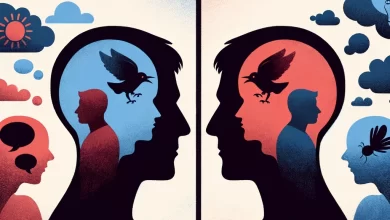The Journey of Love: Unveiling the Five Steps of a Deep and Lasting Connection

Love, in its myriad forms, shapes the core of our human experience. The journey it beckons us on, a complex interweaving of emotions, growth, and understanding, is both universally shared and intimately personal. In this exploration, we delve into the five steps of love, each stage a unique chapter in the narrative of a deep and lasting connection. From the initial spark of attraction to the rich, woven tapestry of long-term commitment, these stages of love guide us through the ebbs and flows of relationships, offering insight into how we can nurture and maintain the profound bonds we share with others.
Introduction to the Stages of Love
The concept of love has been dissected and discussed through countless lenses—psychological, philosophical, and even biological. Yet, at its core, love’s true essence remains a captivating mystery, one that unfolds uniquely for every individual. The stages of falling in love, however, provide a framework to understand this journey. As we embark on this exploration, remember that each relationship is as distinct as the individuals within it, and these stages are not so much rigid steps but rather fluid phases that ebb and flow with the dynamics of life.
Stage 1: Infatuation and Attraction
The initial stage of love, often characterized by an intense infatuation and attraction, marks the beginning of our journey. This phase is akin to a spark that ignites the potential for a deeper connection. It’s during this time that we find ourselves drawn to the other person, often inexplicably, as if pulled by a magnetic force. This stage is marked by a heightened sense of excitement and anticipation; every moment spent with the other person feels electrifying, and when apart, they monopolize our thoughts.
The science behind this attraction points to a cocktail of neurotransmitters and hormones—dopamine, serotonin, and adrenaline—playing their parts in this biological drama. Yet, beyond the physical, there exists a psychological allure, a curiosity to know the other person more deeply. This phase lays the foundational bricks of attraction, setting the stage for the evolving relationship.
Stage 2: The Honeymoon Phase
Emerging from the initial fireworks of attraction, we venture into the honeymoon phase, where the connection between partners deepens and flourishes. During this period, partners tend to view each other and their relationship through rose-colored glasses. Everything seems perfect, and the world seems brighter when you’re together. Conflicts, if any, are often easily resolved or overlooked, overshadowed by the overwhelming joy and love that seem to make any problem insignificant.
This blissful period is not without its biological underpinnings, with oxytocin and endorphins flooding our systems, reinforcing bonding and pleasure. We find comfort in the routine of togetherness, cherishing the shared moments and experiences that knit the fabric of our shared journey. Yet, it’s crucial to remember that this stage, though beautiful, is temporary. It serves as a bridge to deeper, more mature phases of love.
Stage 3: Building a Strong Foundation
As the ephemeral glow of the honeymoon phase dims, the real work begins. This stage is pivotal in transforming the initial spark into a lasting flame. Here, partners start to navigate the complexities of life together, facing challenges and celebrating victories as a united front. This phase is marked by a deepening of understanding, not just of each other but of the relationship itself.
Communication becomes the cornerstone of this stage, as partners learn to voice their needs, desires, and concerns openly and constructively. It’s a time for building trust, demonstrating reliability, and showing mutual respect. These efforts lay a robust foundation for the relationship, preparing it for the inevitable challenges ahead. As we invest time and energy into nurturing this foundation, we find that our connection deepens, enriched by the shared experiences and trials we navigate together.
Stage 4: Navigating Challenges and Conflicts
No journey of love is without its storms. Stage four is about facing and navigating challenges and conflicts that inevitably arise. It’s during these times that the strength of the relationship’s foundation is tested. This stage demands patience, understanding, and an unwavering commitment to mutual growth. Facing conflicts head-on, rather than avoiding them, becomes the mantra for deepening the connection.
Here, the importance of effective communication cannot be overstated. It is through honest, empathetic dialogue that resolutions are found and bonds are strengthened. This stage teaches us the value of compromise, the beauty of forgiveness, and the strength of resilience. As we learn to navigate these challenges together, we emerge stronger, more in tune with each other, and more prepared for the future.
Stage 5: Deepening the Connection and Long-Term Commitment
Having weathered the storms, the relationship enters a stage of deep connection and long-term commitment. This is a period of profound mutual understanding, respect, and appreciation. Partners in this stage are fully aware of each other’s flaws and weaknesses but choose to love each other all the same. It’s a testament to the journey they’ve shared, the challenges they’ve overcome, and the love that has grown and matured over time.
This stage is characterized by a sense of security and contentment. Partners have a clear vision of their future together and work hand in hand to achieve their shared goals and dreams. The relationship is marked by a deep sense of partnership, where both individuals feel supported, valued, and loved. It is, essentially, the culmination of the journey of love, yet it is also a new beginning, with each day offering opportunities to deepen the connection further.
The Importance of Communication in Each Stage
Throughout the stages of love, communication remains a pivotal element. It is the thread that weaves through the fabric of the relationship, holding it together. From expressing initial interest and affection to navigating conflicts and sharing life’s burdens, effective communication is the foundation upon which a lasting connection is built. It allows partners to understand each other deeply, resolve differences, and build a future together based on mutual respect and understanding.
How to Maintain a Deep and Lasting Connection
Maintaining a deep and lasting connection requires conscious effort, commitment, and the willingness to grow together. It involves nurturing the relationship, prioritizing time together, and continuing to communicate openly and honestly. It requires keeping the romance alive, appreciating each other, and never taking the relationship for granted. Love, in its essence, is a verb—an action that we choose to perform day in and day out.
Common Pitfalls to Avoid in Relationships
The journey of love is fraught with potential pitfalls—neglect, complacency, poor communication, and a failure to resolve conflicts constructively. Being aware of these dangers is the first step in avoiding them. It’s crucial to remain vigilant, to keep the lines of communication open, and to remember that a strong, lasting connection is a work in progress, one that demands attention and care.
Conclusion: Embracing the Journey of Love
The journey of love, with its five stages, is a testament to the complexity and depth of human relationships. From the thrilling rush of infatuation to the deep, secure bond of long-term commitment, each stage offers unique challenges and rewards. By embracing this journey, with all its highs and lows, we open ourselves to the possibility of a deep and lasting connection. Love, in its essence, is a journey of growth, discovery, and profound joy. It is a journey well worth taking.






